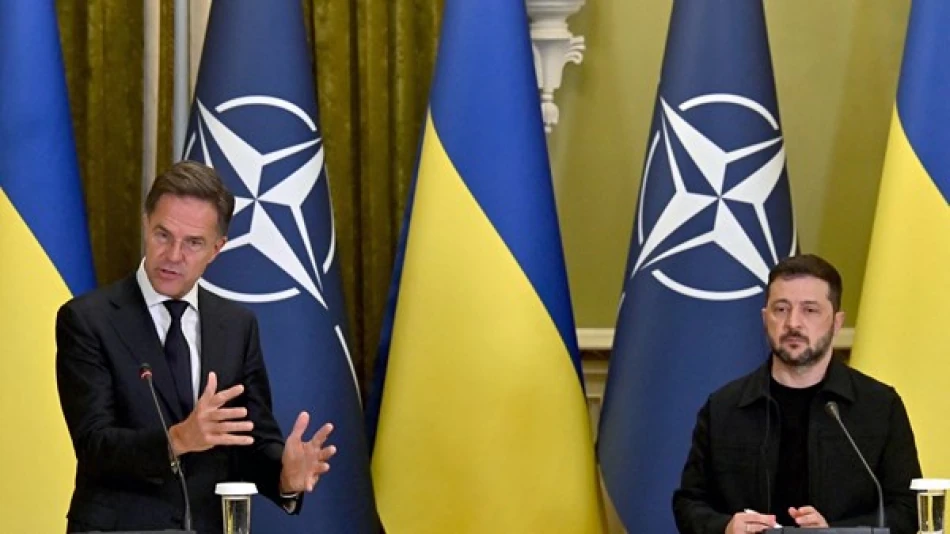
NATO Calls for Security Assurances for Ukraine in Wake of Escalating Tensions
NATO Chief Demands "Ironclad" Security Guarantees as Ukraine Peace Framework Takes Shape
NATO Secretary-General Mark Rutte has outlined ambitious security guarantees that must anchor any future peace agreement with Ukraine, signaling that Western powers are already crafting post-conflict arrangements even as fighting continues. During a high-stakes visit to Kyiv, Rutte emphasized that robust American and European commitments will be essential to prevent future Russian aggression—a stance that could fundamentally reshape European security architecture.
Two-Pillar Security Framework Emerges
Rutte's proposal centers on a dual-track approach that goes far beyond traditional peacekeeping measures. The first pillar focuses on strengthening Ukraine's military capabilities, likely involving long-term weapons supplies, training programs, and defense industrial cooperation. The second pillar envisions comprehensive European and American security guarantees—potentially including rapid response commitments, intelligence sharing, and forward-deployed assets.
"Strong security guarantees will be fundamental, and this is what we are currently working to define," Rutte declared, making clear that U.S. participation is non-negotiable. His emphasis that "these security guarantees must endure" suggests NATO is designing mechanisms that could survive changes in American or European leadership.
Zelenskyy Acknowledges Complex Implementation Challenges
Ukrainian President Volodymyr Zelenskyy's candid assessment reveals the enormous logistical and political hurdles ahead. Speaking alongside Rutte, he acknowledged that crafting these guarantees remains "very difficult" and noted it's "too early to know who will be able to provide military forces, who will be able to provide intelligence, who will have a presence at sea or in the air, and who is ready to provide funding."
This admission highlights a critical gap between NATO's ambitious vision and the practical realities of securing long-term commitments from multiple allies with varying capabilities and political constraints.
Historical Precedent Points to Challenges Ahead
The proposed framework echoes security arrangements that have succeeded—and failed—in other post-conflict scenarios. South Korea's transformation under U.S. security guarantees offers a successful model, but the gradual erosion of Western commitments in Afghanistan demonstrates how political will can evaporate over time.
Unlike traditional NATO Article 5 protections, Ukraine's security guarantees would likely operate outside the alliance's formal structure, requiring new legal frameworks and funding mechanisms. This approach resembles bilateral defense agreements the U.S. maintains with countries like Japan and Australia, but would need to accommodate multiple European stakeholders.
Strategic Implications for European Security Order
Rutte's proposals signal NATO's recognition that any Ukrainian peace deal must include deterrent mechanisms robust enough to prevent renewed Russian aggression. The emphasis on "enduring" guarantees suggests the alliance has learned from past agreements that collapsed when political circumstances changed.
For European allies, this framework could require sustained defense spending increases and forward military deployments that extend far beyond current commitments. The involvement of air and naval assets mentioned by Zelenskyy indicates a comprehensive approach that would integrate Ukraine into Western defense systems without formal NATO membership.
The success of this ambitious security architecture will ultimately depend on whether Western political leaders can maintain long-term commitments that transcend electoral cycles—a challenge that has proven difficult even within existing alliance structures.
 Layla Al Mansoori
Layla Al Mansoori







